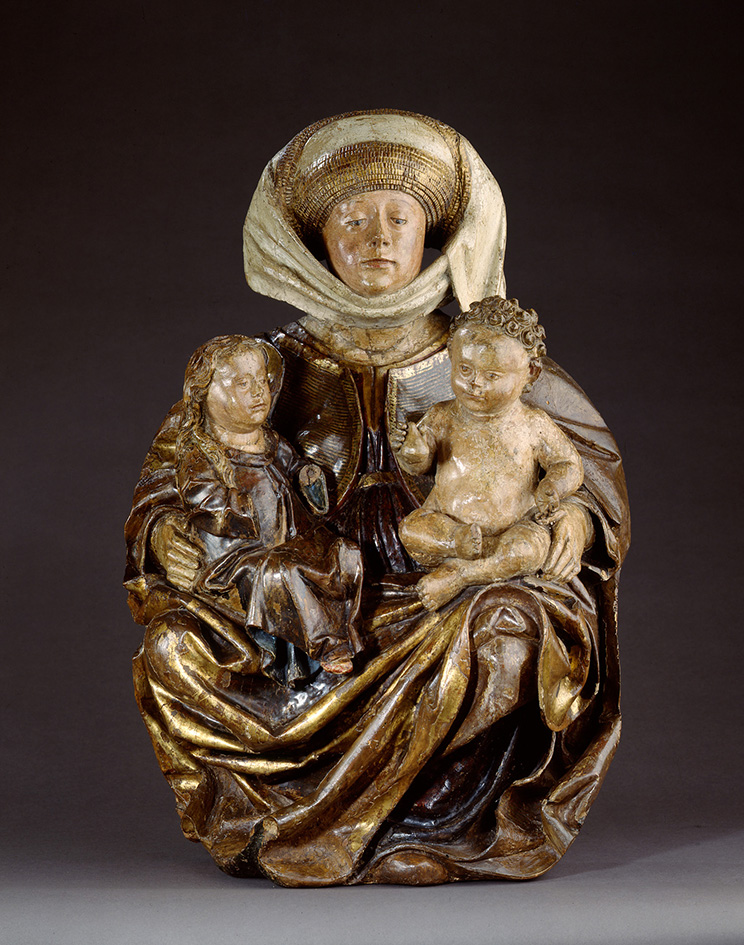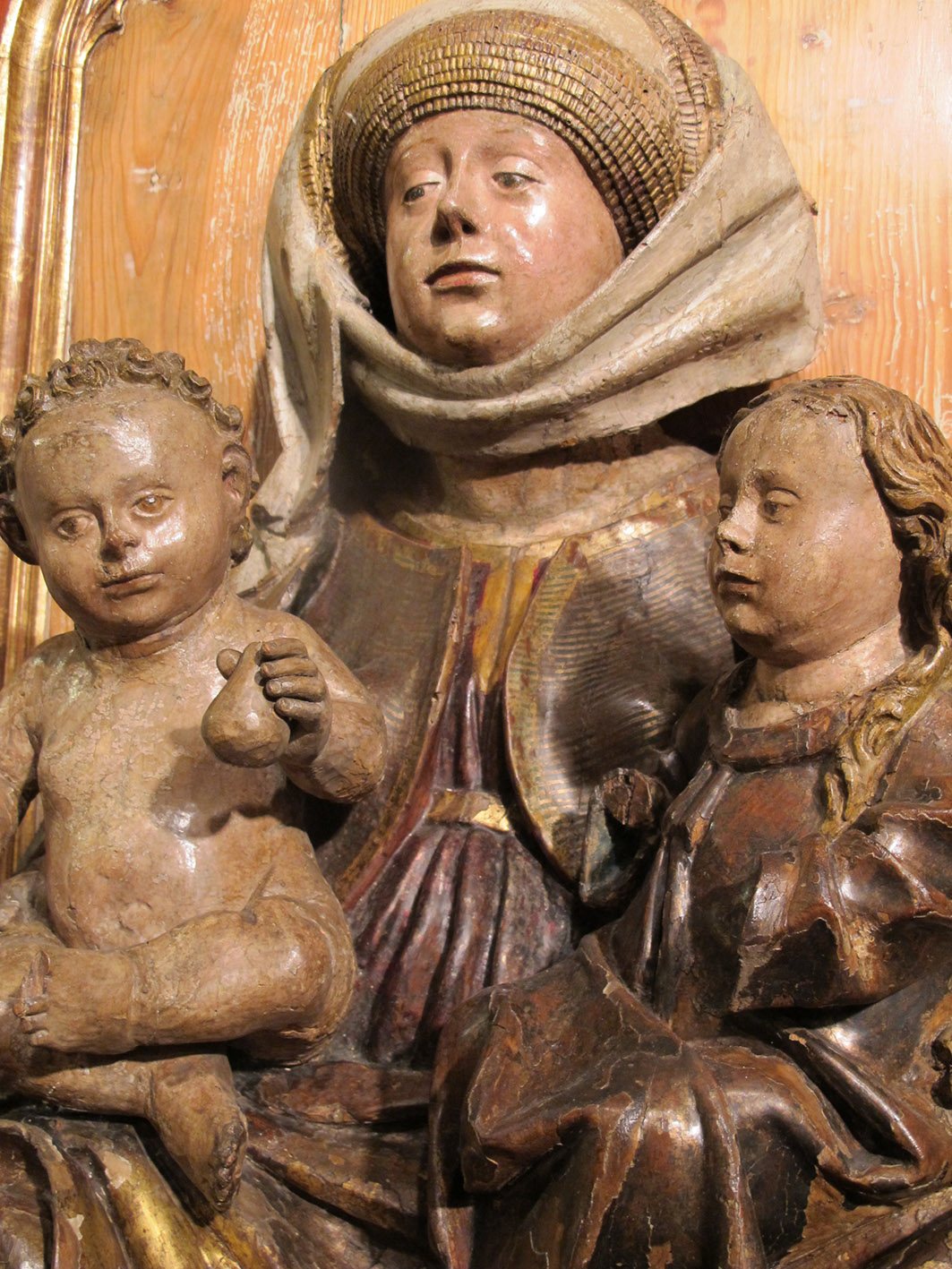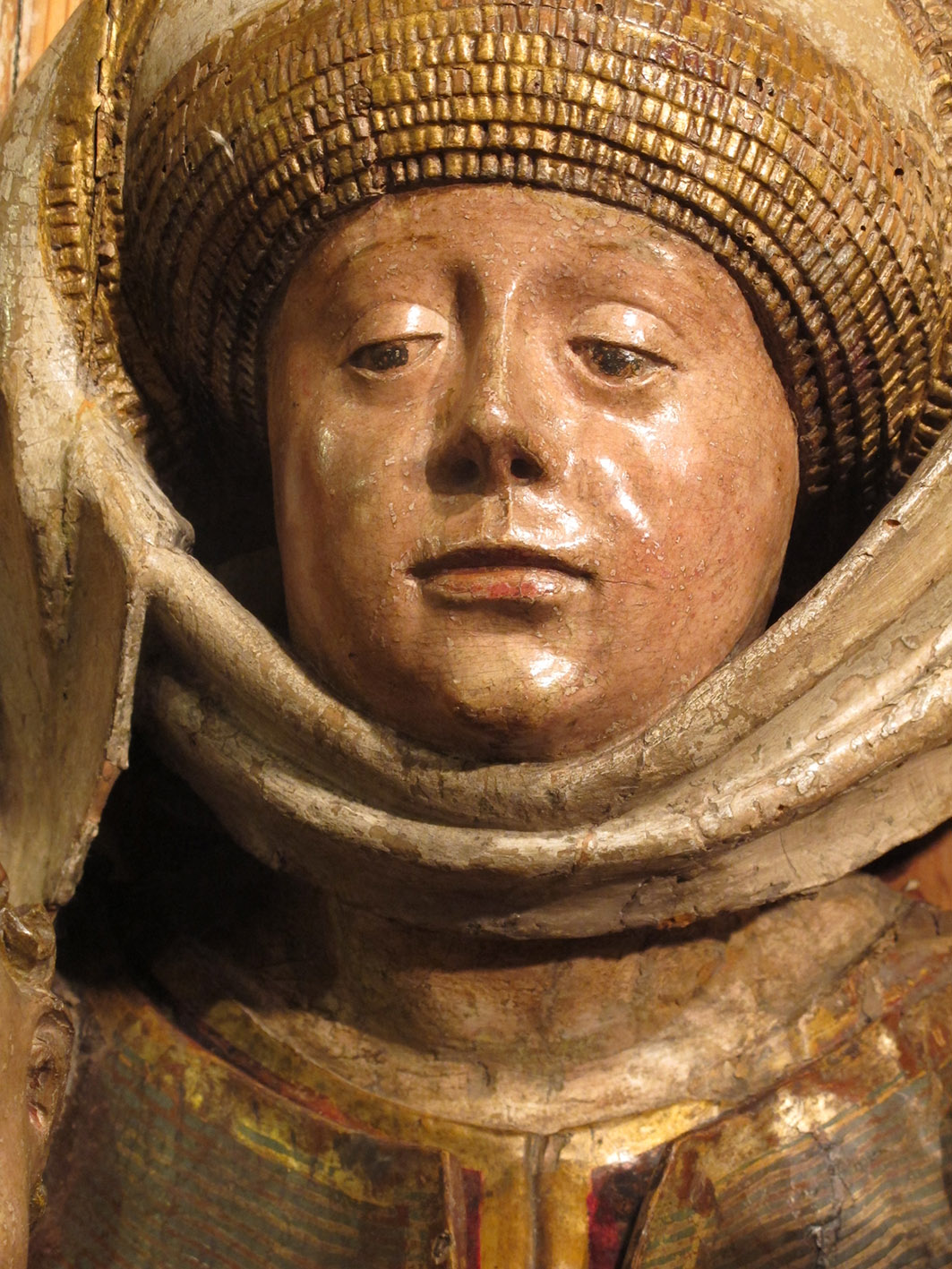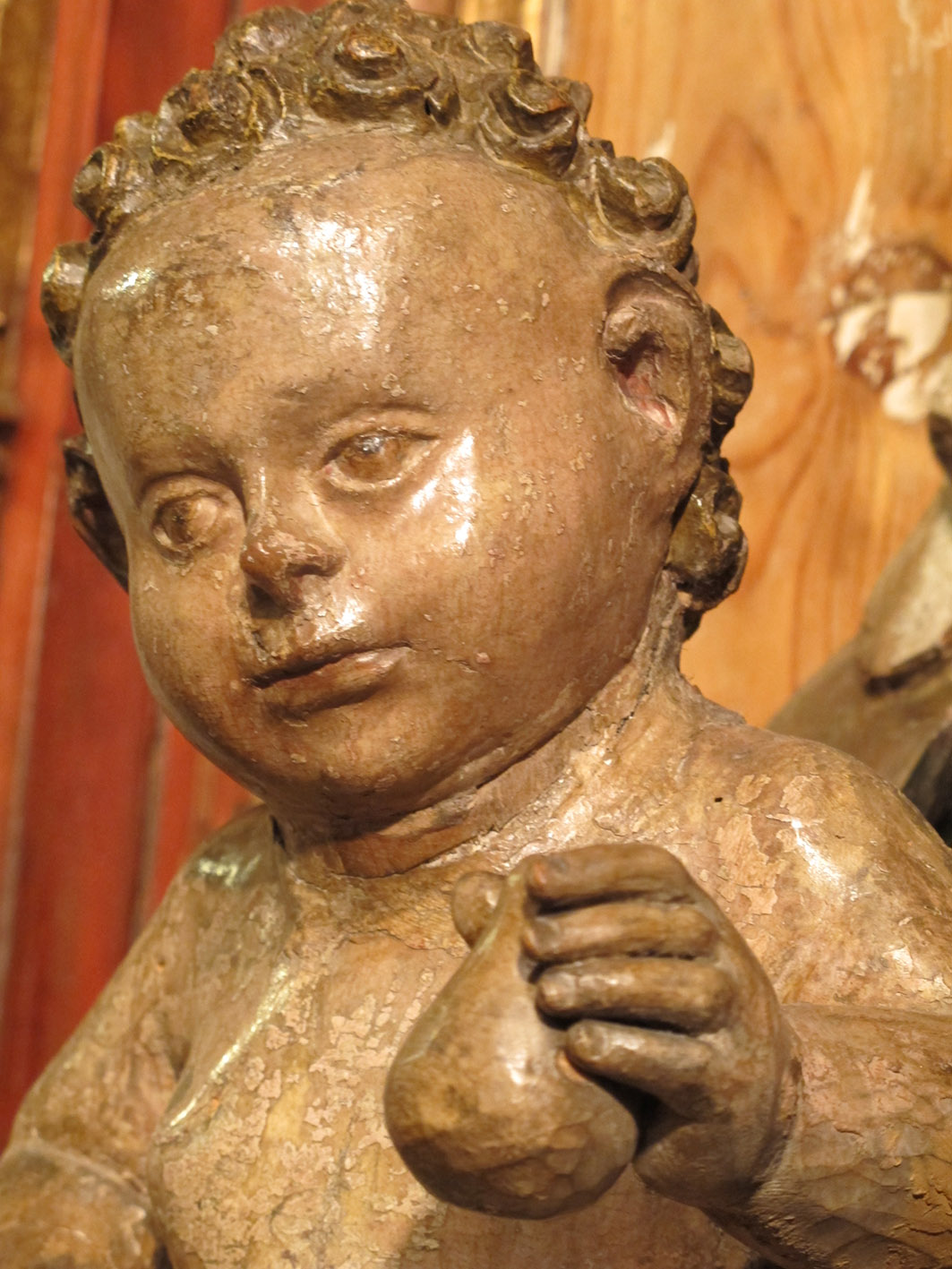Description
Important carved limewood group, hollowed out in the back, with a rich polychromy. Saint Anna carries on the left knee her daughter the Virgin Mary wearing a tunic and on the right one her grandson Jesus depicted as a naked child, holding a pear in his hand.
Probably central figure of an altarpiece from southern Germany.
The cult of Saint Anna grows in Western Europe particularly after the mystical visions Saint Colette Boylet had in 1406. It soon gets global and by the early 16th century Saint Anna is allready a figure very popular among the christian saints and numerous churches and places of worship consecrated to her appear. The mother of the Virgin acts a tutelary saint to those wishing to obtain indulgence or a protection against epidemies. Beside her popular role Saint Anna also embodies the blessed maternal figure. Indeed God granted her pregnancy late in her life while her husband was in retreat out of the city. The depiction of the three characters therefore talks not only about family, aiming to touch the devotee’s sensibility, but also about the mystery acting before the Incarnation, the Immaculate Conception to become later dogma of the catholic faith.
Yet Saint Anna does not appear inside the canonic books composing the Bible but her legend is known from the apocryphal gospels such as Gospel of James, the Gospel of pseudo-Matthew or Jacobus de Voragine’s Golden Legend. The image-makers made of it an iconography from which two themes stand out. The annecdotic Education of the Virgin and the symbolic Saint Anna with the Virgin and Child, Annaselbdritt in german.
Here Saint Anna appears monumental by the change of scale between her and the two children. She wears a belted red dress adorned with a gold bread on the neck-line and a blue coat striped with gold lines applied with the point of the brush. Her head-dress, a white veil enriched with gold carvings, was worn by married women or elderly. From her shoulders a wide golden cloack comes back on her knees where are seating Mary and Jesus. The Virgin wears a simple tunic on which the only refinement is the delicate blue lining. Her hairs are depicted loose to express her virginal youth. On the other knee the child Jesus is shown naked inviting the devotees to humility and presenting explicitly the Incarnation, exhibiting his human nature. This way of depicting Jesus as a naked child was especially in use in women convent where independent scultpures of Jesus was treated with all the care due to a real child.
The sculpture is carved from a limewood log, a wood especially favored by swabian workshops because of its homogeneous appearance and of its tender and light nature allowing a very delicate carving with a nice polishing. Here the artisan completed an extraordinary realistic effect giving Jesus a very supple body, the Virgin a real child’s face and neck and Saint Anna beautifully modeled hands and a life-breathing face. Her strong chin, the thick lips and semi-closed eyes with heavy eyelids are characteristic features of Nördlingen region, northern Swabia. The flesh-tone, coming last in polychromy steps, strengthen the illusion of life. The lower lip, the one supposed to be struck by light, received less pigment than the upper one. The pink tint of the chicks is applied with a pad giving this velvety effect.
The pear held by Jesus reminds us of the forbidden fruit eaten by the first parents, the original sin for which atonement the child Jesus will sacrifice himself. A pear rather than an apple because of the freedom of interpretation given by the genesis. Indeed, the latin poma designates any fruits with pips ; apples, figs, pears. Since the 5th CE we choose to identify the fruit as an apple because of its latin name, perfect homonymous of evil ; malum.
Its important size and its hollowed back indicates us the sculpture belonged to a sumptuous altarpiece. Standing on the altar it was the piece to where all the gazes converged, a virtual window looking to the divine spheres.




